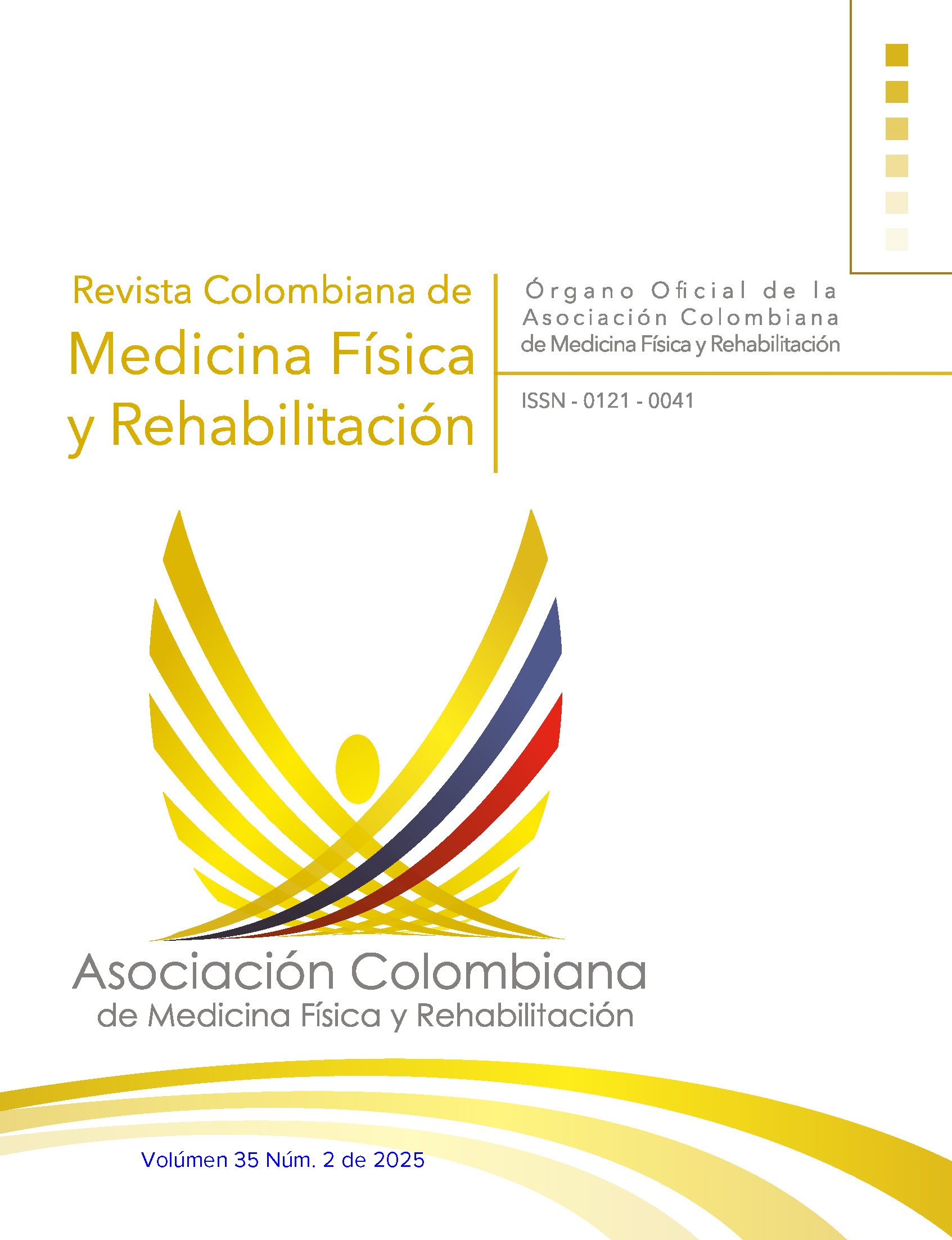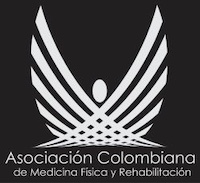Nivel de actividad física en personas con amputación de miembros inferiores
DOI:
https://doi.org/10.28957/rcmfr.494Palabras clave:
Amputados, extremidad inferior, actividad motora, conducta sedentaria, rehabilitaciónResumen
Introducción. La amputación de miembros inferiores impacta significativamente la movilidad e independencia de las personas sometidas a este procedimiento. La evaluación del nivel de actividad física en esta población es crucial para establecer objetivos de rehabilitación enfocados en la prevención de enfermedades asociadas a la falta de movimiento.
Objetivo. Cuantificar el nivel de actividad física en pacientes amputados de miembros inferiores atendidos en un centro de rehabilitación especializado de Ciudad de Panamá, Panamá.
Métodos. Estudio transversal realizado en 39 adultos con amputación de miembros inferiores atendidos en el Instituto Nacional de Medicina Física y Rehabilitación de Ciudad de Panamá entre octubre de 2023 y agosto de 2024. El nivel de actividad física se midió utilizando la Forma Corta del Cuestionario Internacional de Actividad Física (IPAQ-SF) y se categorizó en Insuficientemente activos (<600 MET-min/semana), Actividad física total mínima (600 a <3.000 MET-min/semana) y Actividad física total suficiente (≥3.000 MET-min/semana).
Resultados. La media de edad de los participantes fue 52,7±13,9 años, 71,8% eran hombres y 64,1% tenía amputación transfemoral unilateral. La causa de amputación más frecuentemente reportada fue la vascular, seguida por la traumática. En cuanto a la clasificación de los participantes según el nivel de actividad física, 41% se catalogaron como sedentarios; 33,3%, con un nivel actividad física mínima, y 25,6%, con un nivel de actividad física suficiente. Se encontró menor actividad en las mujeres (p=0,005) y el tiempo promedio de estar sentado fue 4,97±1,9 horas al día. La mayoría de los participantes (84,6%) no tenían prótesis. Además, 41% estaban desempleados.
Conclusión. Los niveles de actividad física en personas con amputación de miembros inferiores fueron insuficientes, con una alta proporción de participantes sedentarios.
Referencias bibliográficas
Cifu DX, Braddom RL. Braddom’s Physical Medicine and Rehabilitation. 6th ed. Philadelphia: Elsevier; 2021.
Okesina AA, Nsubuga I, Omoola OO, Okesina HA. Open Access second anatomy congress proceedings: full paper Understanding Lower Limb Amputation: A Review of the Strategies for Healthcare Improvement, Prevention, and Management. Rwanda Medical Journal. 2024;81(1):118-33. Disponible en: https://dx.doi.org/10.4314/rmj.v81i1.13.
Sederberg M, Tarkhan A, Ray LS, Lee ES, Lin C. Physical Activity in Adults With an Amputation as Assessed With a Self-Reported Exercise Vital Sign. PM R. 2020;12(9):861-9. Disponible en: https://doi.org/10.1002/pmrj.12333.
Ali B, Ali S, Ahsan A, Anjum A, Aftab M; Rehman HU, et al. Level of physical activity among lower limb prosthesis users in Punjab, Pakistan. Journal of Population and Therapeutics and Clinical Pharmacology. 2024;31(9):1674-8. Disponible en: https://doi.org/10.53555/v66yj969.
Chen-Ku CH, Gonzalez-Galvez G, Vásquez M, Fuente G, Nakazone MA, Silva Giordano AI, et al. Vascular complications in patients with type 2 diabetes: Prevalence and Comorbidities in 6 countries of Latin America (a cohort of the discover study program). Endocr Pract. 2019;25(10):994-1002. Disponible en: https://doi.org/10.4158/ep-2018-0473.
Mc Donald Posso AJ, Bradshaw-Meza RA, Mendoza-Morales EA, Jaen Y, Cumbrera-Ortega A, Mendoza-Posada EJ. Diabetes in Panama: Epidemiology, Risk Factors, and Clinical Management. Ann Glob Health. 2015;81(6):754-64. Disponible en: http://dx.doi.org/10.1016/j.aogh.2015.12.014.
Pachon-Burgos A, McDonald-Posso AJ, Espinosa-De Ycaza A, Caballero-Arauz R, Quiros-Coronel A, Mendoza E. Risk factors associated with amputations in patients with diabetic foot infection. Seven years of experience in a reference hospital in Panama. The diabetic foot study group at Chiriqui (the FOOTCHI study group). Endocrine and Metabolic Science. 2024;16:100184. Disponible en: https://doi.org/10.1016/j.endmts.2024.100184.
Xu J, Haider A, Sheikh A, González-Fernández M. Epidemiology and Impact of Limb Loss in the United States and Globally. Phys Med Rehabil Clin N Am. 2024;35(4):679-90. Disponible en: https://doi.org/10.1016/j.pmr.2024.05.003.
Lee CH, Cheung B, Yi GH, Oh B, Oh YH. Mobile health, physical activity, and obesity: Subanalysis of a randomized controlled trial. Medicine (Baltimore). 2018;97(38):e12309. Disponible en: http://dx.doi.org/10.1097/MD.0000000000012309.
Melo VH, Sousa RAL, Improta-Caria AC, Nunes MAP. Physical activity and quality of life in adults and elderly individuals with lower limb amputation. Rev Assoc Med Bras (1992). 2021;67(7):985-90. Disponible en: https://doi.org/10.1590/1806-9282.20210382.
Miller MJ, Blankenship JM, Kline PW, Melanson EL, Christiansen CL. Patterns of sitting, standing, and stepping after lower limb amputation. Phys Ther. 2021;101(2):pzaa212. Disponible en: https://doi.org/10.1093/ptj/pzaa212.
Deans S, Kirk A, McGarry A, Rowe DA, Dall PM. A comparison of objectively measured free-living physical behaviour in adults with and without lower limb amputation. Int J Environ Res Public Health. 2023;20(13):6198. Disponible en: https://doi.org/10.3390/ijerph20136198.
Camoin M, Velho G, Saulnier PJ, Potier L, Abouleka Y, Carpentier C, et al. Differential prognostic burden of cardiovascular disease and lower-limb amputation on the risk of all-cause death in people with long-standing type 1 diabetes. Cardiovasc Diabetol. 2022;21(1):71. Disponible en: https://doi.org/10.1186/s12933-022-01487-8.
Van Helm S, Krops LA, Dekker R, Vrieling AH. Effectiveness of (Active) Lifestyle Interventions in People With a Lower Limb Amputation: A Systematic Review. Arch Rehabil Res Clin Transl. 2022;4(4):100207. Disponible en: https://doi.org/10.1016/j.arrct.2022.100207.
Roșca AC, Baciu CC, Burtăverde V, Mateizer A. Psychological Consequences in Patients With Amputation of a Limb. An Interpretative Phenomenological Analysis. Front Psychol. 2021;12:537493. Disponible en: https://doi.org/10.3389/fpsyg.2021.537493.
Cancela-Carral JM, Ayán C, Vila-Suárez ME, Gutiérrez J, Gutiérrez-Santiago A. Validez de Constructo del Cuestionario Internacional deActividad Física en Universitarios Españoles. Revista Iberoamericana de Diagnóstico y Evaluación Psicológica – e Avaliação Psicológica. RIDEP. 2019;52(3):5-14. Disponible en: https://doi.org/10.21865/RIDEP52.3.01.
Beit Ner E, Ron G, Essa A, Levy A, Finestone AS, Tamir E. Lower Extremity Amputee Outcomes with Reference to Co-morbidities. Isr Med Assoc J. 2022;24(7):470-4. Disponible en: https://pubmed.ncbi.nlm.nih.gov/35819217.
Oliveira VC, Oliveira P, Correia M, Lima P, Silva JC, Pereira RV, et al. Prognostic Value of Charlson Comorbidity Index in Acute Embolic Lower Limb Ischaemia Patients. Ann Vasc Surg. 2021;76:417-25. Disponible en: https://doi.org/10.1016/j.avsg.2021.04.022.
Langford J, Dillon MP, Granger CL, Barr C. Physical activity participation amongst individuals with lower limb amputation. Disabil Rehabil. 2019;41(9):1063-70. Disponible en: https://doi.org/10.1080/09638288.2017.1422031.
Mehra S, Boora S, Katria C. Quality of life in people with lower limb amputation: a study. based on gender differences. International Journal of Health Sciences and Research. 2021;11(2):152-6.
Jo SH, Kang SH, Seo WS, Koo BH, Kim HG, Yun SH. Psychiatric understanding and treatment of patients with amputations. Yeungnam Univ J Med. 2021;38(3):194-201. Disponible en: https://doi.org/10.12701/yujm.2021.00990.
Cimino SR, Vijayakumar A, MacKay C, Mayo AL, Hitzig SL, Guilcher SJT. Sex and gender differences in quality of life and related domains for individuals with adult acquired lower-limb amputation: a scoping review. Disabil Rehabil. 2022;44(22):6899-925. Disponible en: https://doi.org/10.1080/09638288.2021.1974106.
Seth M, Pohlig RT, Hicks GE, Sions JM. Clinical mobility metrics estimate and characterize physical activity following lower-limb amputation. BMC Sports Sci Med Rehabil. 2022;14(1):124. Disponible en: https://doi.org/10.1186/s13102-022-00518-x.
Husu P, Vähä-Ypyä H, Tokola K, Sievänen H, Rocha P, Vasankari T. Reliability and Validity of Self-Reported Questionnaires Assessing Physical Activity and Sedentary Behavior in Finland. Int J Environ Res Public Health. 2024;21(6):686. Disponible en: https://doi.org/10.3390/ijerph21060686.
Meh K, Sember V, Sorić M, Vähä-Ypyä H, Rocha P, Jurak G. The dilemma of physical activity questionnaires: Fitter people are less prone to over reporting. PLoS One. 2023;18(8):e0285357. Disponible en: https://doi.org/10.1371/journal.pone.0285357.
Darter BJ, Hawley CE, Armstrong AJ, Avellone L, Wehman P. Factors Influencing Functional Outcomes and Return-to-Work After Amputation: A Review of the Literature. J Occup Rehabil. 2018;28(4):656-65. Disponible en: https://doi.org/10.1007/s10926-018-9757-y.
República de Panamá. Contraloría General de la República. Encuesta de Mercado Laboral Telefónica: junio 2021 [Internet]. Ciudad de Panamá: Instituto Nacional de Estadística y Censo; 2021 [citado agosto 8 de 2025]. Disponible en: https://www.inec.gob.pa.
Lee SP, Chien LC, Shih HT, Ho S, Clemens S. Returning to work after dysvascular lower limb amputation-A novel multivariate approach to examine relative contributions of biopsychosocial predictors. Prosthet Orthot Int. 2025;49(1):30-7. Disponible en: https://doi.org/10.1097/pxr.0000000000000322.
Essien SK, Zucker-Levin A. Comorbidity and risk factors of subsequent lower extremity amputation in patients diagnosed with diabetes in Saskatchewan, Canada. Chronic Illn. 2023;19(4):779-90. Disponible en: https://doi.org/10.1177/17423953221137891.
Poehler D, Czerniecki J, Norvell D, Henderson A, Dolan J, Devine B. Comparing Patient and Provider Priorities Around Amputation Level Outcomes Using Multiple Criteria Decision Analysis. Ann Vasc Surg. 2023;95:169-77. Disponible en: https://doi.org/10.1016/j.avsg.2023.05.026.
World Medical Association (WMA). WMA Declaration of Helsinki – Ethical principles for medical research involving human participants [Internet]. Helsinki: 75th WMA General Assembly; 2024 [citado agosto 28 de 2025]. Disponible en: https://www.wma.net/es/policies-post/declaracion-de-helsin-ki-de-la-amm-principios-eticos-para-las-investigaciones-medicas-en-seres-humanos/.
US Departamento f Health and Human Services. The Belmont Report. Ethical Principles and Guidelines for the Protection of Human Subjects of Research [Internet]. Washingtong D.C.: US Departament of Health and Human Services; [citado agosto 28 de 2025]. Disponible en: https://www.hhs.gov/ohrp/regulations-and-policy/belmont-report/index.html.
República de Panamá. Asamblea Nacional. Ley 84 de 2019 (mayo 14): Que regula y promueve la investigación para la salud y establece su rectoría y gobernanza, y dicta otras disposiciones. Ciudad de Panamá: Gaceta Digital; mayo 16 de 2019 [citado septiembre 9 de 2025]. Disponible en: https://cnbi.senacyt.gob.pa/wp-content/uploads/2019/07/Ley-N%C2%B084-del-14-de-mayo-de-2019-Ley-de-inves-tigaci%C3%B3n.pdf.
Cómo citar
Descargas
Descargas
Publicado
Número
Sección
Licencia
Derechos de autor 2025 Revista Colombiana de Medicina Física y Rehabilitación

Esta obra está bajo una licencia internacional Creative Commons Atribución-NoComercial-SinDerivadas 4.0.

| Estadísticas de artículo | |
|---|---|
| Vistas de resúmenes | |
| Vistas de PDF | |
| Descargas de PDF | |
| Vistas de HTML | |
| Otras vistas | |



